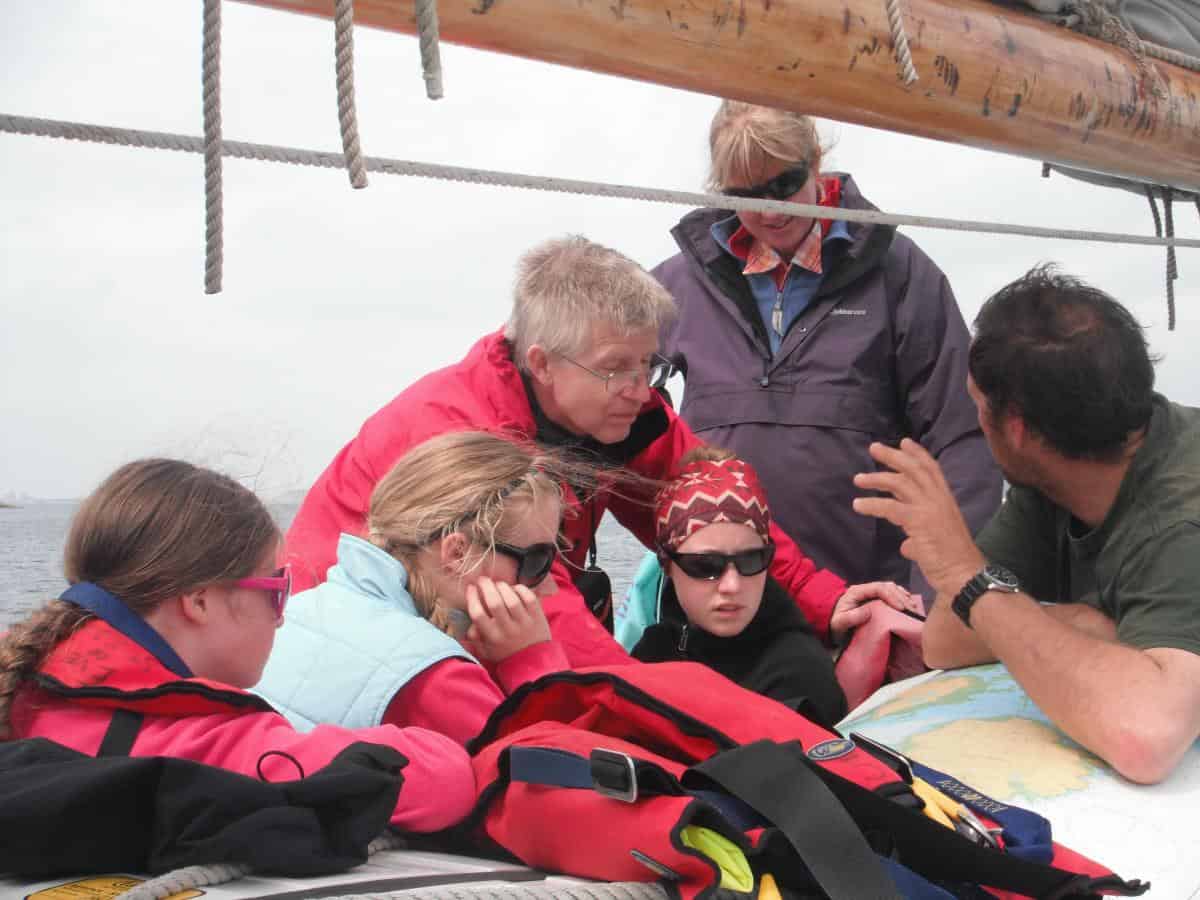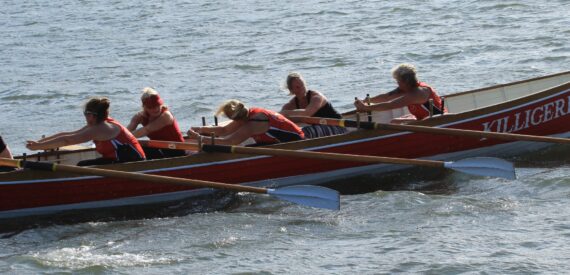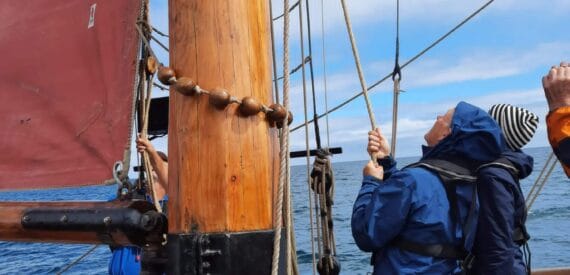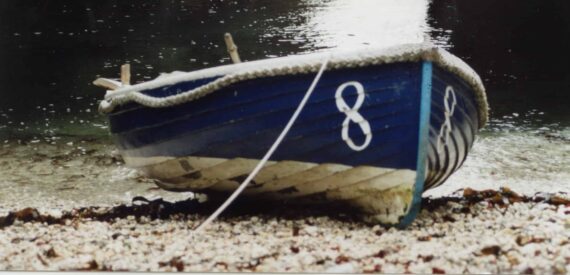What is Pilotage?
Pilotage is navigating anywhere you can bump into things. If you are in sailing waters where it is shallow enough to run aground or you are near the coast, then you need to understand how to pilot your vessel. This is not just for potential yachtmasters. As a day skipper going in and out of ports you will nearly always be in pilotage waters. Ocean sailors have it easy.
Part one of this guide covers how to write a pilotage plan.
This is the second part of our HOW TO series on Pilotage, and will help you implement your pilotage plan keeping ‘all the balls in the air’ – juggling command skills, sailing and navigation.
HOW TO Execute a Pilotage Plan
-
Plan Before you Go
-
“Never go where your mind hasn’t been already”
Charts, pilot book photos, Almanacs, tidal stream atlases, local knowledge all help your paint a picture in your mind of an unknown port before you get there. This is the art of the navigator and part of the fun.
As an absolute minimum you should have a careful look at the chart(s) and your likely route, check out the weather and make a note of the tides and hazards for the port you are leaving and your destination. Then take a long, hard look at your happy crew and suss out their strengths and weaknesses.
It is easy to get overwhelmed by the data available, but what you are trying to end up with inside about 30 minutes is a written pilotage plan that combines all your research before you set off.
- Where do I Write it Down?
-
Your pilotage plan might be written in the logbook, on the chart in pencil or on a diagramatic sketch or note book….but it needs to be written down (by law actually – even for leisure sailors).
- Brief your Crew
-
Before you set off, explain your navigational plan to the crew. Even if you have a mate, it will help keep everyone alert and interested.
Now if you set off and get clobbered by the boom, your crew might have some idea how to get you safely into port.
- “Vasco de Gama did it on deck”
-
The scary navigators are those than keep diving below decks to the chart table at critical moments, or worst still, never surface at all. Have a portable pilotage plan you can bring on deck (Clip board and plan in a plastic envelope) and stay up where you can see the whole beautiful plan evolve, then you won’t keep getting disorientated.
- Delegate sailing to “mate on deck”
-
Share the load and delegate your best sailor to think about the sailing side of the plan. Then you can concentrate on looking for the next ‘head mark’ or light at night whilst they remember to trim the jib.
“Mr Mate the next course is 330 degrees – I’m hoping its not too dead downwind” is a good way of keeping them thinking ahead and they might just warn you if the wind changes
- Don’t Confuse the Helm
-
Before you announce an alteration of course, stand by the helm (person steering) and compass and take a sneaky look at your new course. Ideally your new course will line up on a feature ahead (this is called a headmark). Identify the new headmark with the helm and help them settle on the new course.
It is good to look down the bearing of the next leg you need to take, and give the helm some idea of where you are going next but don’t give the helm too many figures to remember.

- Where are you right now ?
-
And more importantly, if you are here now, where will you be in 3 or 6 minutes ?
As a skipper you need to be able to plot your postion fast and THEN estimate where you (i) are by the time you have finished your fix and (ii) where you might be in 6, 12 or 18 minutes if you stay on the same course and speed. Essential if you want to do a distracting task like go to the loo, or put a reef in.
And why are we using units of 6 minutes?
- If you can’t navigate fast enough then slow down.
-
Learning to navigate fast enough to dead reckon ahead of where you are now takes practice. Sailing up a river channel at 7 knots means you will travel 0.7 miles in 6 minutes…which is 0.35 miles in 3 minutes, which is over a cable (185 metres) in one minute.
Navigating under sail is fun, but on Eve of St Mawes we might just drop the staysail.
- If in doubt STOP (or even go back a bit !)
-
You can stem the tide next to a known bouy or feature, or if you are under sail – and you have enough room to hove to, then you can leave someone spatially aware on deck and go and check the chart and tides again.
The simplest option is often to turn around and motor or sail back on a reciprocal course.
PANIC ATTACK TIP If you can’t do the sums and take 180 degrees off your current course, then pick up your Breton Plotter – dial up your course at the top of the bearing circle, then read off the reciprocal course off the bottom of the bearing circle.
- Is the Boat Safe?
-
Even on a sunny, calm day if you are in shallow water or close to land, harbour structures or rocks, you need always ask yourself:
Is the boat safe ? What if the engine stops ? how quickly will I be in trouble ? would I be better on the windward side of a channel ? what if someone falls overboard now ? etc.
In your pilotage plan it is much better to box off areas where you shouldn’t go, rather than plan to follow GPS ‘tram lines’ down the middle of a big ship channel.
Then everywhere not boxed off is safe to sail, so you have more sea room to avoid other boats and go for a bit of a sail and tack into ports.
- Keeping the Crew Motivated
-
Keep the rest of your crew warm, well fed, involved and excited about arriving somewhere new….or reaching a haven that will keep them safe and cosy – otherwise there is not much point making the journey.
- Save some mental energy for ‘Parking’
-
It is easy to lose the plot at the end of a long day or night. Well before you start implementing your pilotage plan into port, Identify a sensible place to take sails down, prepare for coming alongside, mooring or anchoring. Get someone to start the supper on the way in and keep the cups of tea coming – right upto to your ‘arrival and sails down point’

Practical Training at Sea
Come and practice at sea on Moosk or Golden Vanity with our RYA sailing instructors to help you. On a Competent Crew Course, we will introduce you to charts and navigation, even though it is not in the syllabus. On a Day Skipper course we can take you through this in bite size chunks, until you are putting the whole thing together and skippering on short passages yourself. On a Yachtmaster Prep course, we speed the whole thing up and do more night and blind (fog) pilotage to hone your skills.
Debbies Top Pilotage Tips
Debbie Purser is the RYA Principal of Classic Sailing School and has seen many ways of teaching navigation – both at sea and in the classroom. She has learnt fast pilotage at 22 knots in the Royal Navy reserve, taught young people on sail training yachts, trained as a deck officer for larger vessels using radar and chart plotters for pilotage. For the last 18 years Debbie has skippered charter boat Eve of St Mawes with 5-6 guest crew and her ‘weapon of choice’ for pilotage is still the hand bearing compass and an Admiralty chart.
Jargon Buster
We make no apologises for using nautical jargon. These terms have evolved through the centuries as an internationally understood language and learning them is part of becoming a sailor.
If you don’t understand a term, just ask the question on Classic Sailing Facebook and our wonderful community of sailors around the world in 24 different time zones will give you an answer…
Here are a few jargon busters to get you going:
Execute a Plan = make it happen, carry out the orders, implement your proposals.
Helm = You take the helm to steer a ship, whether it be with a tiller or a wheel.
Reciprocal Course = back the way you came – 180 degrees different from your current course.
Transit = where two objects (one near and one in the distance) line up you have a transit. If you can identify the two objects on the chart, you can draw a line between them on the chart. If you extend the line beyond the object in the fore ground – you have a ‘position line’ and your boat will be on it. All you need is another bearing and you have a very fast fix.
Headmark = something to aim at along a set course. Down here in Cornwall we have lots of lovely landmarks and coastal features to aim for. If you can find a hill summit or lighthouse that is in the direction you want to go, then you can create a course to steer with a headmark. Much easier for the helm to aim at and you can tell if there is sideways tide or much leeway





